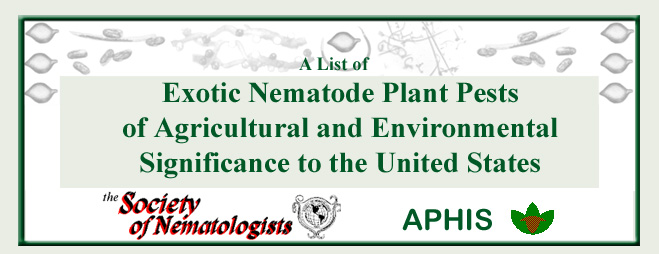
PROJECT BACKGROUND INFORMATION

| Excluding pests from agricultural production areas is often the most
effective and cost-beneficial management strategy. In the nineteenth
century plant exploration and importation was an official objective and
goal of the newly established United States Department of Agriculture (USDA),
and by 1923 the USDA had introduced some 50,000 plant species and varieties
into the United States. Unfortunately, in the nineteenth century there
was limited awareness or concern that exotic pests accompanied these introduced
plants. After many painful experiences with introduced pests, state and
federal regulatory agencies were established at the beginning of the twentieth
century to exclude exotic pests that threatened agricultural crops and
forests. The last decades of the twentieth century were characterized by
a rapid expansion of global travel and trade, accompanied by a rapid increase
in world population and demand for food and fiber. This rapid expansion
of global trade has strained the resources of regulatory agencies and challenged
them to develop new strategies in their efforts to prevent a new menace
of global biopollution with exotic pests.
Because nematodes are very difficult pests to detect, the efforts that regulatory agencies make to exclude them are often inadequate. The old adage “out of sight, out of mind” seems to apply, especially because exotic nematode introductions are difficult to trace and their economic impact often is revealed many years later. Because regulatory agencies are seldom held accountable for nematode introductions, they seldom hire scientists with expertise in nematology that might be able to develop creative policies to strengthen efforts to exclude economically important nematodes. Recognizing this need, the Society of Nematologists’ Regulatory Committee in recent years has actively tried to improve communication and dialogue with USDA-APHIS-PPQ scientists who have the primary federal mandate to safeguard agricultural and natural resources. Recent incursions of serious pests prompted APHIS to request external audits of its operations, with the goal of identifying changes needed to more effectively accomplish this critical mission. This resulted in approximately 300 recommendations in a document entitled Safeguarding American Plant Resources (SAPR). These recommendations support efforts by APHIS to form stronger partnerships with external research agencies and professional societies. As a result, APHIS has developed a cooperative agreement with the Society of Nematologists to provide expertise related to several SAPR resolutions. In September of 2001 the SON EB signed a cooperative agreement with APHIS and approved a SON Regulatory Committee project to: (1) establish a global list of exotic plant nematodes, or nematodes of limited distribution in the US, which are of agricultural, environmental and regulatory concern, (2) assemble and organize available information on nematode pests not known to occur in the United States, and (3) provide suggested criteria and pest priority ratings for future risk and action assessments by APHIS. APHIS is providing financial support for this project, and a Regulatory Committee Working Group has been established to carry out this project under the guidance of the SON Executive Board. |

 |
 |
 |
 |
 |
 |